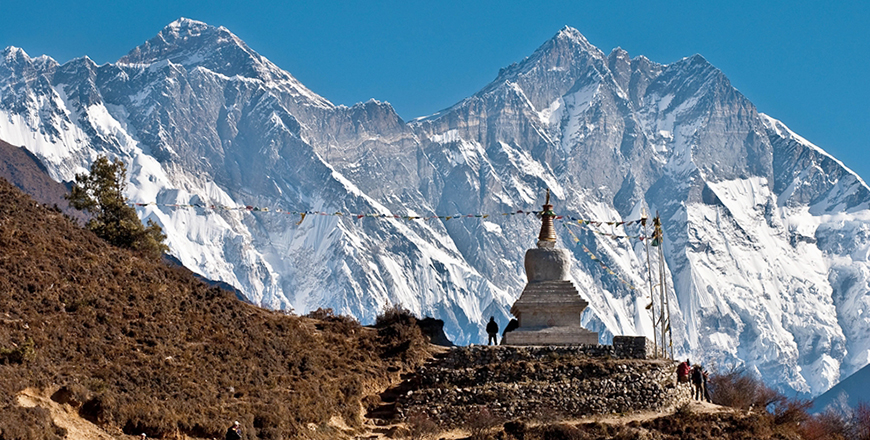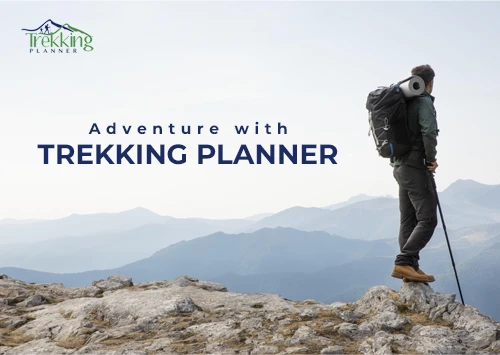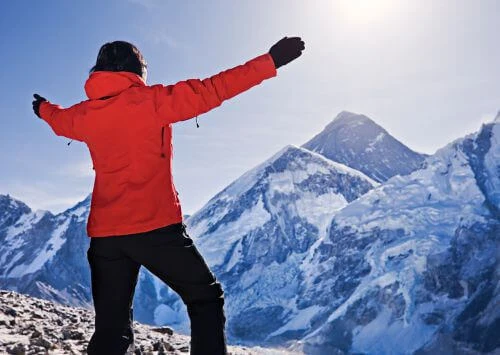The History of Trekking in Nepal: How It All Began.
Have you ever wondered how trekking in Nepal started? This informative post takes you on a journey through time to explore the origins of this popular activity.
Trekking in Nepal has become a popular activity for adventure seekers and nature lovers alike. But have you ever wondered how it all began? This post will take you on a journey through time to explore the origins of trekking in Nepal and how it has evolved into the thriving industry it is today.

The Early Days of Trekking in Nepal.
Trekking in Nepal has a long and rich history, dating back to the early 1900s when the country was first opened up to foreign visitors. In those days, trekking was primarily a means of transportation for traders and locals, who would use the mountain trails to transport goods and supplies between villages. It wasn't until the 1950s that trekking began to gain popularity among foreign visitors, who were drawn to the stunning natural beauty of the Himalayas and unique cultural experiences that could be found in the remote mountain villages.
The early days of trekking in Nepal and the modern days of trekking have seen several significant differences. Here are some of the key distinctions:
Accessibility.
In the early days of trekking, access to remote regions of Nepal was challenging. There were limited transportation options, including basic trails and rudimentary infrastructure. However, with the development of roads, airports, and transportation networks, modern trekking has become more accessible. It is now easier to reach even the most remote areas of Nepal, reducing the time and effort required to embark on a trek.
Infrastructure.
Early trekking routes in Nepal often lacked proper infrastructure, such as teahouses, lodges, and trekking facilities. Trekkers had to rely on camping equipment and carry their supplies. In contrast, modern trekking routes have established teahouses and lodges at regular intervals along the trails. These provide accommodations, meals, and basic amenities, making trekking more comfortable and accessible to a wider range of individuals.
Information and Navigation.
In the early days, trekking information was scarce, and trekkers relied heavily on local knowledge or guidebooks. Navigation was challenging due to the lack of detailed maps and trail markings. However, with the advent of technology, modern trekkers have access to comprehensive trekking guides, detailed maps, and GPS devices. They can research and plan their treks in advance, making navigation easier and safer.
Safety Measures.
Safety measures have significantly improved in modern trekking. Earlier, there were limited rescue and emergency services, and trekkers had to rely on themselves or the assistance of locals in case of an emergency. Nowadays, there are well-established rescue teams, helicopter evacuation services, and better communication networks in popular trekking areas. This ensures a higher level of safety and prompt assistance in case of accidents or emergencies.
Environmental Awareness.
In recent years, there has been a greater emphasis on environmental conservation and responsible trekking practices. Modern trekkers are encouraged to follow eco-friendly guidelines, such as carrying reusable water bottles, minimizing waste, and respecting local customs and traditions. The focus on sustainable tourism has increased, with initiatives aimed at preserving the natural beauty and cultural heritage of trekking areas.
Commercialization and Crowds.
The popularity of trekking in Nepal has grown significantly over the years. In the early days, trekking routes were relatively less crowded, allowing for a more intimate and remote experience. However, with increased commercialization, popular trekking routes like the Everest Base Camp and Annapurna Circuit can now be quite crowded, especially during peak seasons. This can affect the tranquility and sense of adventure that characterized early trekking experiences.
It's important to note that while there are differences between the early days and modern days of trekking, both periods offer unique and rewarding experiences. The early days of trekking had a sense of exploration and remoteness, while the modern era provides greater convenience, safety, and access to amenities.
The influence of Mountaineering Expeditions.
The early mountaineering expeditions in Nepal played a significant role in the development of trekking as a popular activity. In the 1950s and 1960s, mountaineers from around the world flocked to Nepal to attempt to climb the highest peaks in the Himalayas, including Mount Everest. As these expeditions gained publicity, more and more people became interested in exploring the region for themselves. Trekking routes were established to provide access to the mountains and the remote villages along the way, and the Tourism Industry in Nepal began to flourish. Today, trekking is one of the most popular activities for visitors to Nepal, and the country is known around the world for its stunning mountain scenery and unique cultural experiences.
The Rise of Organized Trekking Tours.
As trekking in Nepal became more popular, organized tours began to emerge to cater to the growing demand. In the 1970s, the first trekking agencies were established in Kathmandu, offering guided tours with experienced local guides and porters. These tours provided a more structured and comfortable way for visitors to explore the region, with pre-arranged accommodation and meals along the trekking routes. Today, there are hundreds of trekking agencies in Nepal, offering a wide range of tours to suit different interests and abilities. The rise of organized trekking tours has made it easier than ever for visitors to experience the beauty and culture of Nepal's Mountain Regions.
The impact of tourism on Nepal's economy.
Trekking and Tourism in general have had a significant impact on Nepal's economy. In 2019, tourism accounted for 7.9% of the country's GDP and provided employment for over 1 million people. Trekking is a major contributor to this, with thousands of visitors coming to Nepal each year to explore the country's stunning mountain landscapes. The income generated from trekking tours supports local communities and helps to fund conservation efforts in the region. However, there are also concerns about the environmental impact of tourism and the need to balance economic growth with sustainable development.
The future of Trekking in Nepal.
The future of trekking in Nepal is uncertain, as the country faces a number of challenges related to tourism and sustainable development. While trekking has brought significant economic benefits to the region, there are concerns about the impact of tourism on the environment and local communities. In recent years, there has been a growing focus on sustainable tourism practices, including responsible trekking and conservation efforts. It is hoped that these efforts will help to ensure the long-term viability of trekking in Nepal, while also protecting the country's natural resources and cultural heritage.





